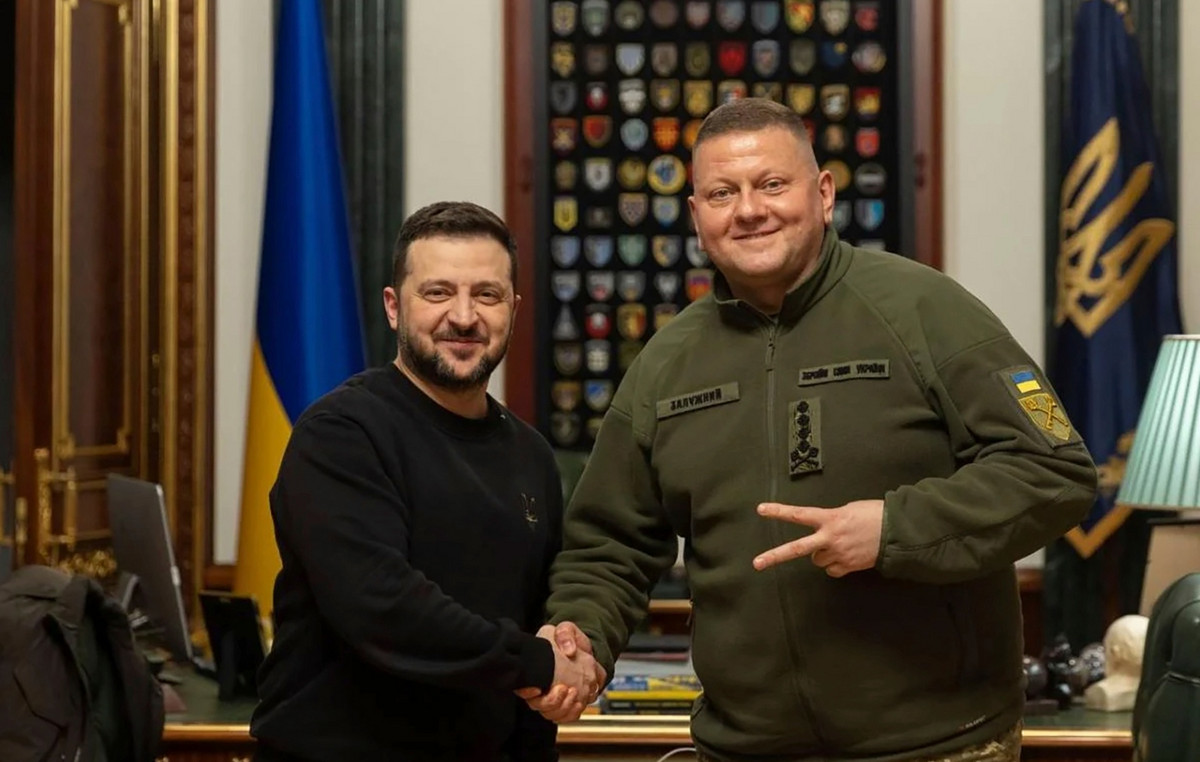In the last quarter of last year, as Ukraine regained large swaths of territory in a series of counterattacks, the country fought Russian forces with American-made artillery and rockets. Guiding some of this artillery was a homemade targeting system that Ukraine developed on the battlefield.
Ukrainian-made software turned off-the-shelf tablets and smartphones into sophisticated targeting tools that are now widely used in the Ukrainian military.
The result is an application that feeds satellite imagery and other intelligence imagery into a real-time targeting algorithm that helps units close to the battlefront direct fire to specific targets. And because it’s an app, not a piece of hardware, it’s easy to update and make improvements quickly, and it’s available to a wide range of teams.
US officials familiar with the tool say it has been highly effective in directing Ukrainian artillery fire towards Russian targets.
The app is among dozens of examples of battlefield innovations Ukraine has created over nearly a year of war, often finding cheap solutions to costly problems.
Small plastic drones, humming silently overhead, drop grenades and other ordinances on Russian troops. 3D printers now produce spare parts so soldiers can repair heavy equipment in the field.
Technicians converted ordinary pickup trucks into mobile missile launchers. Engineers figured out how to attach sophisticated American missiles to older Soviet fighters like the MiG-29, helping to keep Ukraine’s air force flying after nine months of war.
Ukraine has even developed its own anti-ship weapon, the Neptune, based on Soviet rocket designs that can hit the Russian fleet nearly 200 miles away.
That kind of Ukrainian ingenuity impressed US officials, who praised Kiev’s ability to find solutions. “MacGyver” for battlefield needs that fill important tactical gaps left by larger and more sophisticated Western weaponry.

While American and Western officials don’t always have a perfect view of exactly how Ukraine’s custom systems work — largely because they aren’t on site — officials and analysts alike say Ukraine has become a veritable laboratory for cheap and affordable solutions. battle effective.
“Their innovation is incredibly impressive,” said Seth Jones, director of the international security program at the Center for Strategic and International Studies.
‘Real-world battle test’
Meanwhile, the war in Ukraine has also offered the United States and its allies a rare opportunity to study how their own weapons systems perform under heavy use – and what munitions both sides are using to win victories in this cutthroat modern war.
US operations officers and other military officials have also tracked how successfully Russia has used cheap, disposable, explode-on-impact drones supplied by Iran to decimate Ukraine’s power grid.
Ukraine is “absolutely a weapons laboratory in every sense, because none of this equipment has ever been used in a war between two industrially developed nations,” said a source familiar with Western intelligence. “This is a real-world battle test.”
For the US military, the war in Ukraine has been an incredible source of data on the usefulness of its own systems.
Some high-level systems given to the Ukrainians – such as the Switchblade 300 drone and a missile designed to hit enemy radar systems – have proven less effective on the battlefield than anticipated, according to a US military operations officer. with battlefield knowledge, as well as a recent study by a British think tank.
But the light American-made M142 multiple-rocket launcher, or HIMARS, has been critical to Ukraine’s success — even as officials have learned valuable lessons about the maintenance repair fee these systems required under such heavy use.

How Ukraine used its limited supply of HIMARS missiles to wreak havoc on Russian command and control, hitting command posts, headquarters and supply depots, was telling, a defense official said, adding that military leaders would study this for years. .
Another crucial piece of information was about the M777 howitzers, the powerful artillery that has been a critical part of Ukraine’s battlefield power. But howitzer barrels lose their caliber if too many shells are fired in a short space of time, another defense official said, making artillery less accurate and less effective.
The Ukrainians also made tactical innovations that impressed Western officials. During the first weeks of the war, Ukrainian commanders adapted their operations to employ small teams of dismounted infantry during the Russian advance on Kiev.
Armed with shoulder-mounted Stinger and Javelin rockets, Ukrainian troops were able to sneak up on Russian tanks without infantry on their flanks.
The US has also closely studied the conflict for greater lessons about how a war between two modern nations might be fought in the 21st century.
The operations officer said one lesson the US can take from this conflict is that towed artillery, such as the M777 howitzer system, may be a thing of the past. These systems are harder to move quickly to avoid counterattack, and in a world of ubiquitous drones and aerial surveillance, “it’s very hard to hide these days,” this person said.
When it comes to lessons learned, “there’s a book to be written about it,” said Democratic Rep. Jim Himes from Connecticut, member of the US House Intelligence Committee.
‘A $10,000 One-Way Attack Drone’

US defense developers also saw the new opportunity to study and commercialize their systems.
BAE Systems has already announced that Russian success with its kamikaze drones has influenced how it is designing a new armored fighting vehicle for the Army, adding more armor to protect soldiers from attacks from above.
And different parts of the US government and industry tried to test new systems and solutions in a struggle that Ukraine needed all the help it could get.
In the early days of the conflict, the National Geospatial-Intelligence Agency sent five light, high-resolution surveillance drones to US Special Operations Command in Europe, just in case they were useful in Ukraine. The drones, made by a company called Hexagon, were not part of an alleged Department of Defense registration program, hinting at the experimental nature of the conflict.
Navy Vice Admiral Robert Sharp, head of the National Geospatial-Intelligence Agency at the time, even publicly boasted that the US had trained a “military partner” in Europe in the system.
“What this allows you to do is go out under cloud cover and collect your own data. [de geointeligência],” Sharp told CNN backstage at a satellite conference in Denver last spring.
Despite the intense effort of a small group of US officials and foreign industry, it remains unclear whether these drones were ever sent to fight.
Meanwhile, several intelligence and military officials told the CNN who expected that creating what the US military calls “assignable” drones, which are cheap, single-use weapons, became a priority for defense developers.
“I wish we could make a $10,000 one-way attack drone,” said one such employee wistfully.
*With information from CNN’s Tim Lister and Alex Marquardt.
Source: CNN Brasil
Bruce Belcher is a seasoned author with over 5 years of experience in world news. He writes for online news websites and provides in-depth analysis on the world stock market. Bruce is known for his insightful perspectives and commitment to keeping the public informed.







